Dragon Empress Wu Zetian Challenged Confucian Beliefs Against Female Rulers
Ellen Lloyd - AncientPages.com - Dragon Empress Wu Zetian was a colorful, strong and unique person and this naturally made her either popular or disliked by many.
She was the only female in Chinese history to rule as Emperor and she had the courage to challenge Confucian beliefs against rule by women and promoted scientific achievements.
She ruled during the Tang Dynasty (618-907 CE) and is considered one of the most effective and controversial monarch in the history of China.
Wu Zetian's Way To Power
Born in 624 in Wenshui county, Shanxi Province into a wealthy, noble family Wu Zetian, alternatively named Wu Zhao, Wu Hou, and during the later Tang dynasty as Tian Hou received a good education and was taught to play music, write, and read the Chinese classics. She grew into an intelligent beautiful woman and she was recruited to the court of Emperor Tai Tsung at the age of 14.
Wu soon became his favorite concubine and after his death, she married his son, Gaozong (r. 628-683 CE) and became Empress consort. In reality, she was truly the power behind the Emperor.
Wu had luck because when Emperor Tai Tsung died, all of his concubines had their heads shaved and were sent Ganye Temple to begin their lives as nuns. This was a common practice after the death of the Emperor. The Emperor's concubines could not be passed on to be used by others. Wu was also sent away, but Gaozong liked her so much that he asked her to return to the court, although he was already married and had others.
She became his first concubine, but this was not enough for her. Wu was ambitious and wanted more power. There were problems between the women surrounding the Emperor. Gaozong's wife, Lady Wang, and his former first concubine, Xiao Shufei, were jealous of each other and the situation became even worse when Wu arrived at the court.
Mysterious Death Of Wu Zetian's Daughter
Wu gave birth to many of Gaozong’s sons and she became more powerful. What really happened is difficult to say because there are different versions of the story and historians cannot agree which of them is true. According to Wu's own account, Lady Wang and Xiao Shufei conspired against her but, according to other historians, Wu started and finished the problems she had with them.
Other women were jealous of Wu Zetian.
In 654 CE, Wu had a daughter who died soon after birth. The baby was strangled in her crib and Wu claimed that Lady Wang had killed her because she was jealous. Some sources state it was Wu who had killed her own daughter, but Lady Wang was the last person seen in the room and had no alibi. Wu also accused Lady Wang and her mother of practicing witchcraft.
Emperor Gaozong believed Wu, divorced Lady Wang and sent her and her mother away. Then, he married Wu who now had almost everything she wished for.
Within five years of their marriage, the Emperor suffered a crippling stroke. Wu Zetian took over the administrative duties of the court, a position equal to the Emperor. She created a secret police force to spy on her opposition, and cruelly jailed or killed anyone who stood in her way. After the death of her husband, she moved her youngest, and much weaker son, into power. She in effect ruled through him.
She carefully eliminated any potential enemies from the court and had Lady Wang and Lady Xiao killed after they had gone into exile.
Dragon Empress Wu Zetian Challenged Confucian Beliefs About Women And Promoted Science
Dragon Empress Wu Zetian started to challenge Confucian beliefs against the rule by women. She initiated a campaign to elevate the position of women and told scholars to write biographies of famous women. She researched Daoism, Buddhism, and Confucianism herself and advocated the parts that supported the equality of women and men. The only supporting material of a female ruler came from one scroll of Buddhism, so she mass-printed it and had people learn it.
During her reign, Empress Wu placed Buddhism over Daoism as the favored state religion. She invited gifted scholars to China and built Buddhist temples and cave sculptures. Chinese Buddhism achieved its highest development under the reign of Wu Zetian. She also moved her court away from the seat of traditional male power and tried to establish a new Zhou dynasty.
Shortly after she took the throne there was an earthquake which was interpreted as a bad omen. Many interpreted is a sign showing Wu had upset the balance of nature by assuming a power that belonged to a man, but she was of a different opinion.
She claimed the mountain was a good omen which reflected the Buddhist mountain of paradise, Sumeru. She had the mountain named Mount Felicity and claimed it had risen to honor her and her reign.
Dragon Empress Wu Zetian - Image is taken from An 18th-century album of portraits of 86 emperors of China, with Chinese historical notes. Originally published/produced in China, 18th century. (British Library, Shelfmark Or. 2231) Credit: Wikipedia
There is no doubt, her climb to power was ruthless, but she was a skilled ruler who treated people fairly. She reduced the army's size and stopped the influence of aristocratic military men on government by replacing them with scholars. Everyone had to compete for government positions by taking exams. She was responsible for a major expansion of the Chinese empire, extending it far beyond its previous territorial limits, deep into Central Asia.
She treated peasants by lowering oppressive taxes, raising agricultural production, and strengthening public works. As she grew older, Empress Wu become increasingly superstitious and fearful. Finally, in 705, she was pressured to give up the throne in favor of her third son. Wu Ze Tian died peacefully at age eighty-one the same year, cementing her legend that still resounds in history today.
Was Dragon Empress Wu Zetian Deliberately Painted In Dark Colors By Later Historians?
Dragon Empress Wu Zetian is often presented as a ruthless, conniving, scheming, and bloodthirsty woman who even murdered her own daughter to gain power. It’s possible this is exactly how she was, but we should keep in mind that we rely on sources written by various ancient Chinese historians who had their own agenda. Some of them wanted to paint the Dragon Empress in dark colors because a woman like Wu, in the most powerful position in government threatened the traditional patriarchy. We really do not know what happened and how her daughter died. Whether she died a natural death or was murdered by ‘someone’.
How accurate the picture of Empress Wu Zetian is, remains a matter of debate. The fact remains that Dragon Empress Wu Zetian was the only woman in more than 3,000 years of Chinese history to rule in her own right.
Written by Ellen Lloyd – AncientPages.com
Copyright © AncientPages.com & Ellen Lloyd All rights reserved. This material may not be published, broadcast, rewritten or redistributed in whole or part without the express written permission of AncientPages.com and Ellen Lloyd
About the author:
Ellen Lloyd – is the owner of AncientPages.com and an author who has spent decades researching ancient mysteries, myths, legends and sacred texts, but she is also very interested in astronomy, astrobiology and science in general
More From Ancient Pages
-
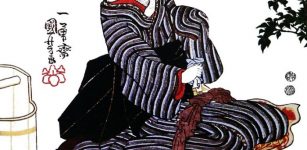 Jigai – Suicide Ritual For Wives Of Samurai – Feminine Counterpart Of Seppuku
Ancient History Facts | Feb 24, 2018
Jigai – Suicide Ritual For Wives Of Samurai – Feminine Counterpart Of Seppuku
Ancient History Facts | Feb 24, 2018 -
 Europe’s Earliest Culture Of Aurignacian People Made Amazing Images With Dots
Archaeology | Mar 5, 2017
Europe’s Earliest Culture Of Aurignacian People Made Amazing Images With Dots
Archaeology | Mar 5, 2017 -
 Seven Times People Discovered The Americas And How They Got There
Featured Stories | Sep 9, 2022
Seven Times People Discovered The Americas And How They Got There
Featured Stories | Sep 9, 2022 -
 Ancient Egyptian Blue Used To Create New Nanomaterial 100,000 Times Thinner Than A Human Hair
Ancient Technology | Mar 24, 2020
Ancient Egyptian Blue Used To Create New Nanomaterial 100,000 Times Thinner Than A Human Hair
Ancient Technology | Mar 24, 2020 -
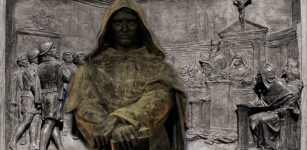 On This Day In History: Vatican Began 7-Year-Long Trial Against Giordano Bruno – On Jan 27, 1593
News | Jan 27, 2017
On This Day In History: Vatican Began 7-Year-Long Trial Against Giordano Bruno – On Jan 27, 1593
News | Jan 27, 2017 -
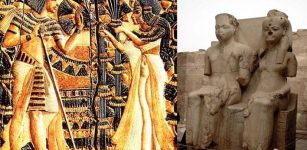 Ankhesenamun – Mysterious Death Of Tutankhamun’s Wife Ended The True Amarna Bloodline
Featured Stories | Mar 23, 2018
Ankhesenamun – Mysterious Death Of Tutankhamun’s Wife Ended The True Amarna Bloodline
Featured Stories | Mar 23, 2018 -
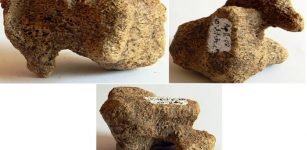 12,000 Years Ago Siberian People Possessed Technique To Soften Ivory And Create Toys Or Art Items
Ancient Technology | Jan 6, 2021
12,000 Years Ago Siberian People Possessed Technique To Soften Ivory And Create Toys Or Art Items
Ancient Technology | Jan 6, 2021 -
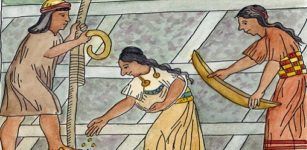 Why Was Ayllu Very Important For The Inca People?
Ancient History Facts | Feb 19, 2019
Why Was Ayllu Very Important For The Inca People?
Ancient History Facts | Feb 19, 2019 -
 Ancient Egyptian Tombs With Stunning Trove Of Artifacts And Human Remains Unearthed In Saqqara
Archaeology | Jan 17, 2024
Ancient Egyptian Tombs With Stunning Trove Of Artifacts And Human Remains Unearthed In Saqqara
Archaeology | Jan 17, 2024 -
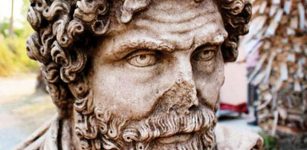 1,700-Year-Old Roman Bust Excavated In Ancient City Of Soli Pompeiopolis In Turkey
Archaeology | Jul 19, 2018
1,700-Year-Old Roman Bust Excavated In Ancient City Of Soli Pompeiopolis In Turkey
Archaeology | Jul 19, 2018 -
 Wonderful Long-Lived Nymphs In Greek And Roman Mythologies
Featured Stories | Mar 29, 2024
Wonderful Long-Lived Nymphs In Greek And Roman Mythologies
Featured Stories | Mar 29, 2024 -
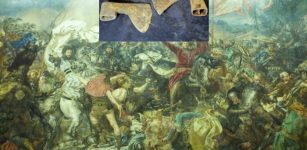 600-Year-Old Axe Heads Used In The Battle Of Grunwald Found in Poland
Archaeology | Sep 1, 2020
600-Year-Old Axe Heads Used In The Battle Of Grunwald Found in Poland
Archaeology | Sep 1, 2020 -
 DNA From 10,000-Year-Old Scandinavian Chewing Gum Reveals Stone Age Diet
DNA | Jan 19, 2024
DNA From 10,000-Year-Old Scandinavian Chewing Gum Reveals Stone Age Diet
DNA | Jan 19, 2024 -
 Who Was The Mysterious Old Leather Man?
Featured Stories | Sep 1, 2021
Who Was The Mysterious Old Leather Man?
Featured Stories | Sep 1, 2021 -
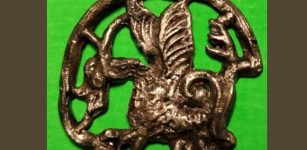 Medieval Pilgrim’s Badge (‘Pilgrim’s Sign’) Depicting A Basilisk Dragon In A Circle Discovered In Southeastern Poland
Artifacts | Mar 5, 2024
Medieval Pilgrim’s Badge (‘Pilgrim’s Sign’) Depicting A Basilisk Dragon In A Circle Discovered In Southeastern Poland
Artifacts | Mar 5, 2024 -
 Abu Dhabi Fossil Dunes May Have Inspired The Ancient Great Flood Story – Professor Says
Archaeology | Jul 10, 2022
Abu Dhabi Fossil Dunes May Have Inspired The Ancient Great Flood Story – Professor Says
Archaeology | Jul 10, 2022 -
 New Entrances To Ancient Underground City In Kayseri, Turkey – Found Accidentally
Archaeology | May 1, 2020
New Entrances To Ancient Underground City In Kayseri, Turkey – Found Accidentally
Archaeology | May 1, 2020 -
 On This Day In History: Vasco De Gama Departed On First European Voyage To India – On July 8, 1497
News | Jul 8, 2016
On This Day In History: Vasco De Gama Departed On First European Voyage To India – On July 8, 1497
News | Jul 8, 2016 -
 Notre Dame Is On Fire! Can The Magnificent Cathedral Still Be Saved?
News | Apr 15, 2019
Notre Dame Is On Fire! Can The Magnificent Cathedral Still Be Saved?
News | Apr 15, 2019 -
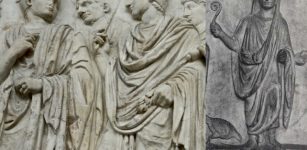 5 Different Types Of Priests In Ancient Rome – Their Role And Responsibility Explained
Ancient History Facts | Jan 30, 2018
5 Different Types Of Priests In Ancient Rome – Their Role And Responsibility Explained
Ancient History Facts | Jan 30, 2018



